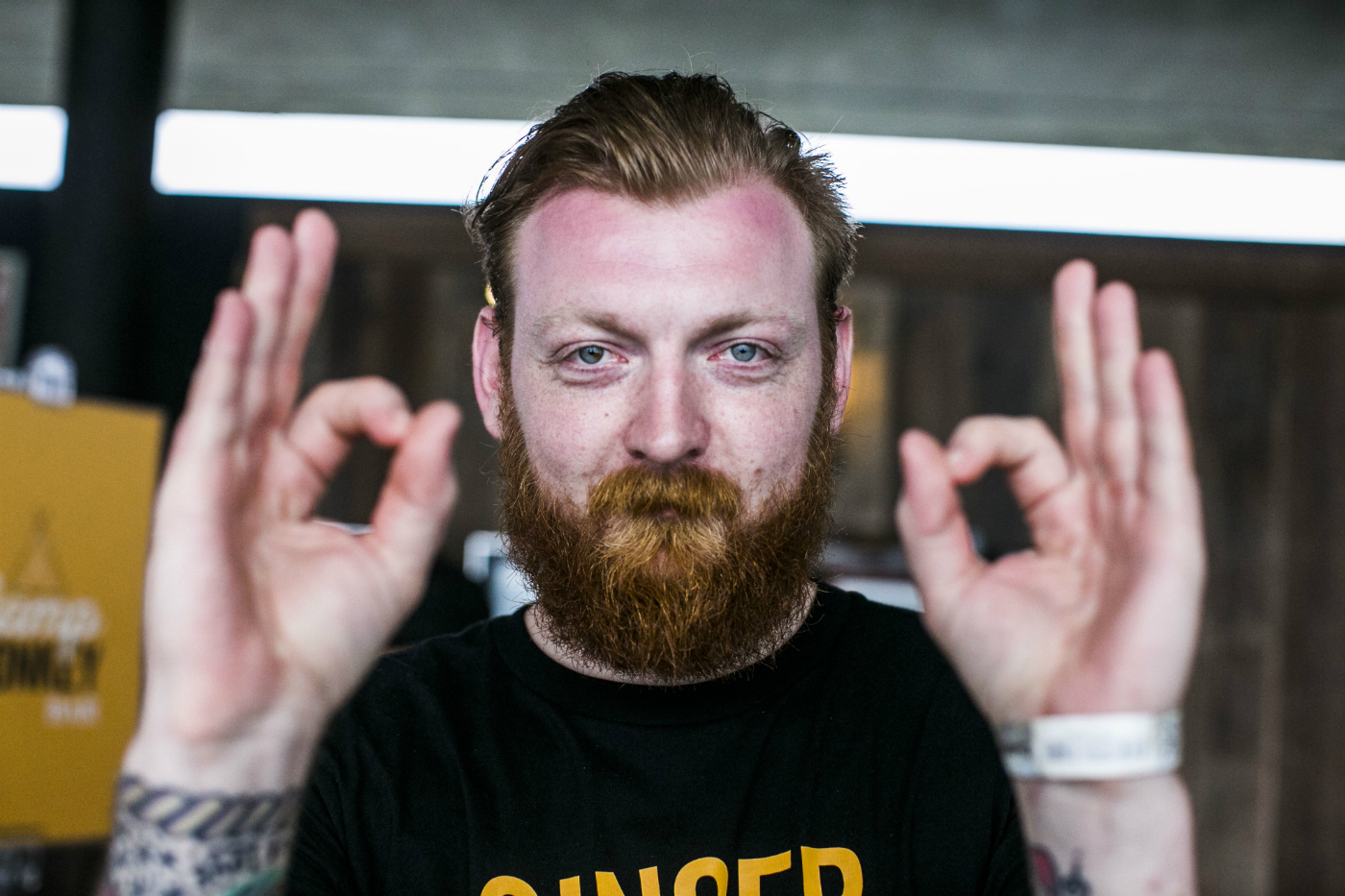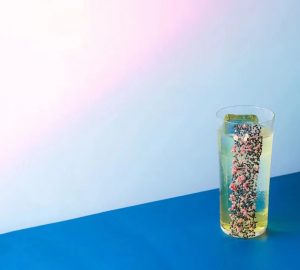From Nathan Shearer, previously of London’s Callooh Callay and Swift. By Holly Graham.
Nathan Shearer, previously of London’s Callooh Callay and Swift, stopped by in Singapore last week, and Monkey Shoulder organized a team chat with the city’s bartenders. We asked Nathan his top tips for successfully serving good drinks to big crowds. Here’s what he had to say.
1 Attract customers and get repeat business.
Obviously. Because without them, your bar isn’t going to be a high-volume bar. To do that, your best bet is to ensure repeat business. And you’ll get that by making sure you…
2 Don’t test a customer’s patience.
Let’s say your bar is packed out from open to close. Make sure those inside never wait more than 10 minutes for a drink. Get your floor staff to stagger tables as best they can, and if things are getting a little slow, chuck out some complimentary prosecco. If it’s getting really busy, turn people away, or have them queue, as a slammed bar is only going to stress your staff and customers out. If you have a queuing system, make sure you have a really fun and friendly host taking care of them. Alternatively, stick guests on your waiting list, get friendly with your local bars and give them a heads-up before sending your customers to them for a pitstop.
3 Look after your local bartender community.
Most customers trust bartender recommendations, so if you’ve ingratiated yourself with your peers, they’ll send guests from their establishment to yours. Plus, they’ll come and see you after shift or on days off, and probably only want beers and daiquiris. Easy.
4 Keep your team happy.
One of the main issues with working in a high-volume bar is the high pressure leading to bartender burnout. Either that or they’ll get hammered on shift, slamming shots and making mistakes. If one person pulls against the team, everything goes to shit. So keep everyone happy and pay them well, because it’s true – if you pay peanuts, you’ll get monkeys. At Callooh Callay, we’d have weekly trainings and a takeover scheme at the upstairs bar Jubjub in which bartenders take over the space and design their menu and playlists, as well as taking care of costing, stock and brand deals, and run the bar for a month. It’s great training and if you make over a certain amount, you get a cut, giving a real sense of ownership.
5 Make drinks that fit your bar.
Your drinks have to fit the vibe and business model of your bar, as well as guest expectations. Go with simple, interesting and accessibly designed drinks and be mindful of scalability. Ask yourself: “Can you produce quality drinks quickly at a high and low volume? Do they appeal to a wider audience but keep industry consumers interested too?” Take daiquiris for example. They’re sweet, sour, strong and get you where you need to go, but you can make them interesting by chucking in a weird ingredient. Stuff like that keeps your fellow hospitality staff interested and ties back to looking after your local bartender community.
6 Keep the drinks interesting but simple.
Try and stay away from too many homemade ingredients, because you know who’s really good at making Campari? Campari is. Making it yourself is cool, but can lead to inconsistency. Also try and have crossover ingredients on your menu, so if you have two Campari drinks, that means you’ve got one bottle instead of two in your speed rail.
7 Save time with mise-en-place.
Get barbacks in early to press that juice, cut that ice, make any home infusions, and pre-prep your garnishes (and keep them close to your station to avoid grazing customers!). Refill cheater bottles and make sure everything is restocked. Give them a decent break, and get your bartenders in later to avoid burnout and add the finishing touches.
8 Better utilise your bar set-up.
If you put all your ingredients on the back bar, you lose space for high-value products. Your cheater bottles should give you access to all menu drinks, so keep them on the bar top and share tins by keeping them in the middle of the bar. Essentially, you want to be able to make your drink completely from your station and without having to turn around, which helps you engage with customers, as well as speed up service.
9 Build your rounds efficiently.
Never pick up a bottle twice when making a round and have in mind which bottle you’re going to grab next. Encourage your bartenders to add ingredients in the order they’re comfortable with but I tend to suggest starting with bitters/dashes, then citrus, sweetener, modifiers and base spirit. There should also be a specific order of what drinks ice goes in first and which drinks are finished first, for example built drinks first, followed by shaken drinks on ice, then stirred drinks on ice then shaken drinks and finishing with stirred drinks. Then always make sure you put everything back in the right place.
10 Design a mean menu.
A top menu design means your guests are more likely to return. Use QR codes that can link back to a YouTube channel of your team making drinks or create a menu that actively encourages guests to take on a challenge. At Callooh Callay, we once had a sticker album menu. Customers ordered a drink, which came with the corresponding sticker which they could fix to their blank menu. They then kept them and when they returned and eventually filled their menu, they got a key to Jubjub.
11 But keep it small and simple.
Fewer drinks means less prep, fewer bottles on the bar, cocktails that are easier to replicate and more chances of double ups on orders. Fun drinks mean people order less classics, making it easier to build your rounds. There’s going to be some drinks that will rarely be ordered and some that ordered too much and cannibalise the rest. Just get rid of them – it’ll mean less prep. Make sure the design of your menu is easy to read. Ideally you want customers to be able to see all the drinks at once, because too many pages mean they’ll forget the offerings from the earlier pages.








